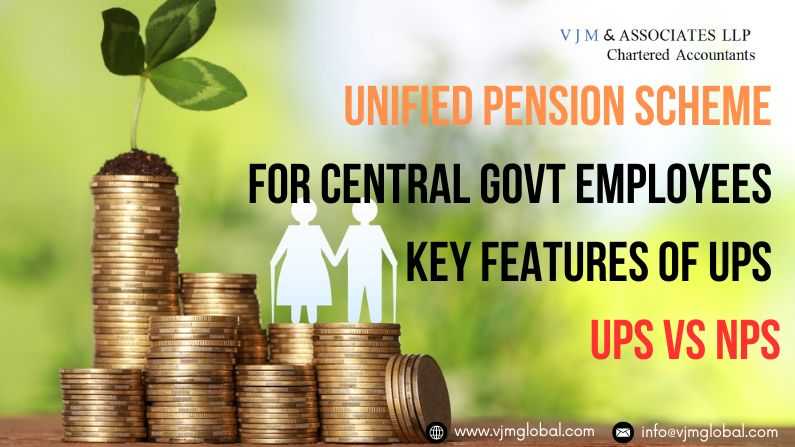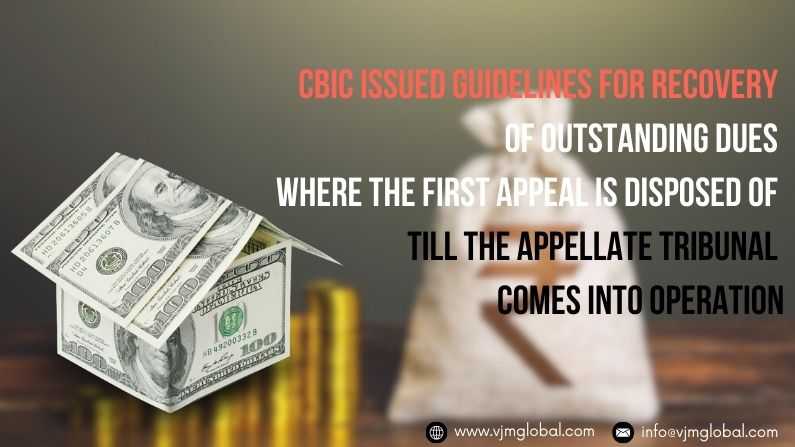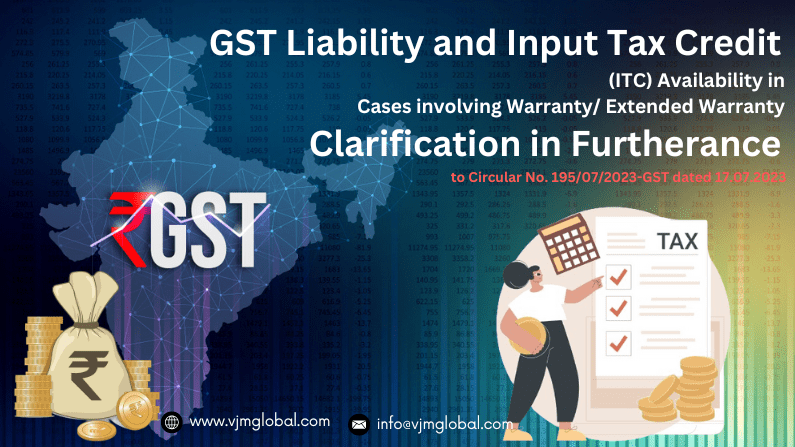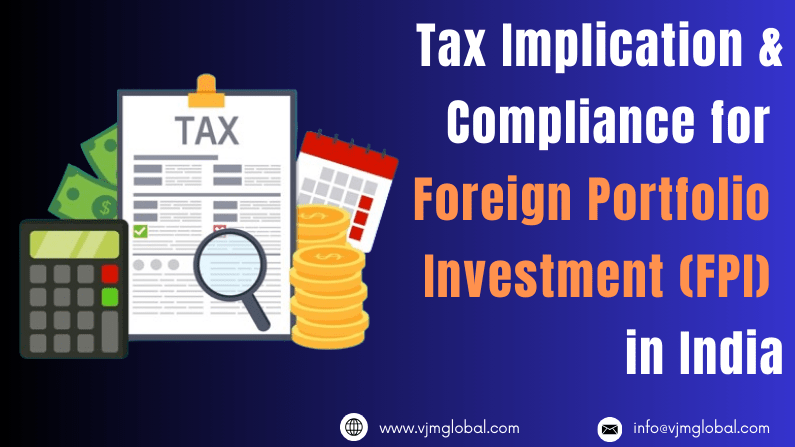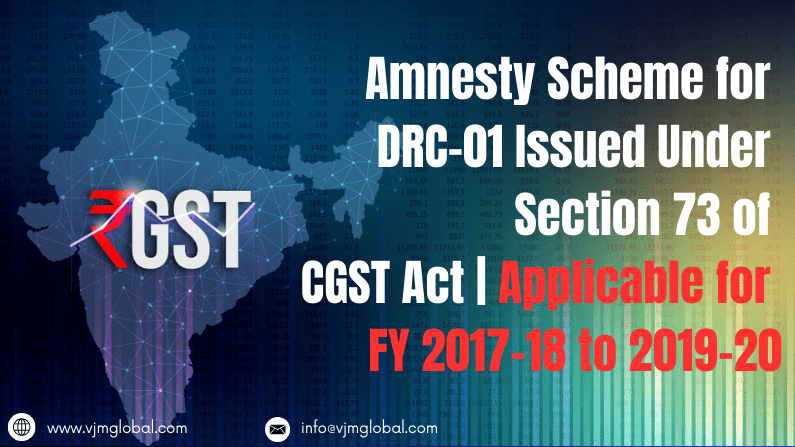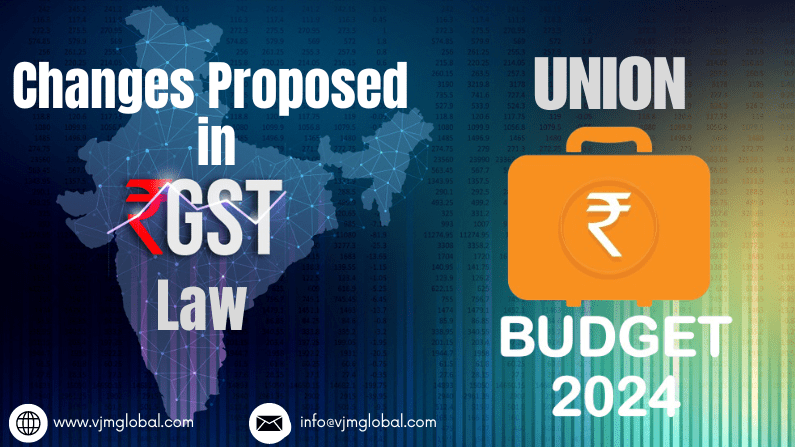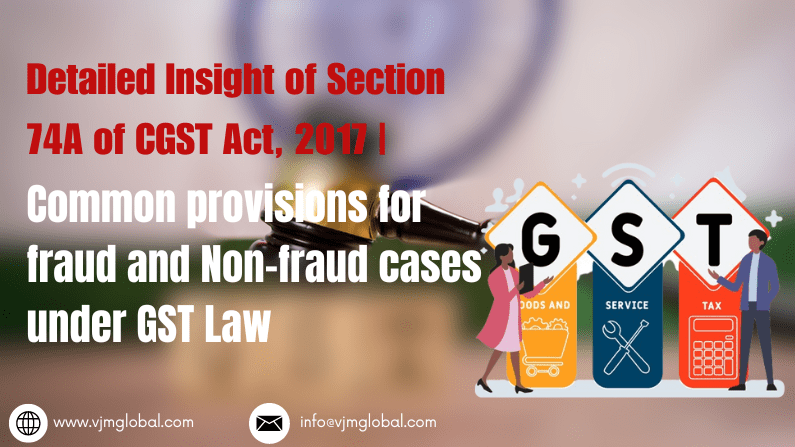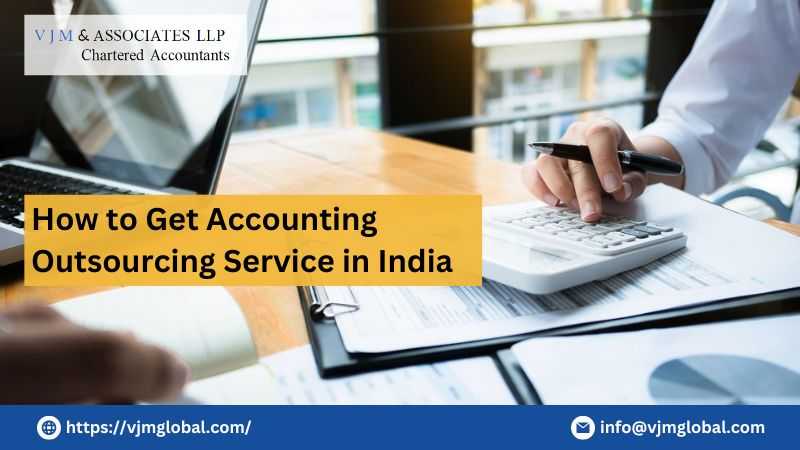According to Article 286(1) of Constitution of India, Export of goods and services is not subject to any taxes either by Centre or state government. Accordingly, sufficient provisions are given under CGST and IGST Act, which provides a refund of all taxes paid with respect to export. The Government of India has taken all the measures to grant hassle-free refunds to exporters and the process of granting refunds has been made fully automatic and online.
However, through a fully automatic refund process, authorities have observed several cases where refunds are claimed by various fraudulent exporters where they claiming ITC either on the basis of ineligible documents or fraudulent documents.
Therefore, in mid of 2019 CBIC implemented a new internal control to ensure that refund is granted only in genuine cases. CBIC started identifying risky exporters and IGST refund of such risky exporters was put on hold till detailed verification is carried out. For risky exporters, the department not only kept IGST refund in abeyance rather drawbacks of such exporters have also been put on hold which further increased the difficulty of genuine exporters. Since the implementation of this additional check, many identified risky exporters have successfully recovered their GST refund by following the set procedures. However, there are many exporters who are still waiting to receive their GST refund after being identified as Risky Exporters.
In this article, we would briefly discuss verification procedures adopted by authorities to ensure the genuineness of refund, Challenges and difficulties being faced by many exporters who have been identified as risky exporters, and more importantly, 2-3 case studies where exporters opted to file a writ petition before Hon’ble High court and successfully granted remedy to recover their GST refund and Drawbacks along with interest.
So, if you are one of the exporters who is bearing a tag of risky exporters and your refund is put on hold by the GST Authority then this article may help you to resolve this issue.
1. Identification of Risky Exporter
- In fully automated refund process, The board identified various cases where exporterly fraudulently claimed excess refund by either of the following ways:
- Exporters claimed ITC on basis of ineligible documents or fraudulently and utilised such excess ITC for payment of IGST on export of goods or
- There is huge variation between the FOB value declared in the Shipping Bill and the Taxable value declared in GST Return to effect higher IGST pay out leading to encashment of credit.
- Therefore, to avoid refund to such fraud exporters, CBIC selected certain random exporters through their rigorous data analytics and Artificial Intelligence tools. However, the manner of identifying risky exporters is not very much clear to the public at large and is completely based on the Artificial Intelligence tool of the department.
2. Verification and Examination of Risky Exporter
- Accordingly, vide Circular No. 16/2019-Customs dated 17th June, 2019, CBIC specified mechanism to verify the IGST Payment for goods exported out of India. Instructions issued vide Circular No. 16/2019-Customs dated 17.06.2019 is as follows:
- DG (System) shall identify the risky exporters on national level and shall share the details of such exporters with Risk Management Centre for Customs (RMCC) and respective Chief Commissioners of Central Tax.
- RMCC shall insert the alert for risky exporters in system and 100% examination of all export cosignments shall be mandatory for such risky exporters. Also, IGST refund of such exporters shall remain suspended.
- If on examination, information furnished in shipping bills tallied with export consignment then consignment will be cleared as per regular practise.
- However, IGST refund of risky exporters shall remain suspended.
- GST officers shall carry out the verification of IGST refund as per standard operating procedure issued by IGST policy wing. The GST formation shall furnish a report to the respective Chief Commissioner within 30 days specifying whether refund claimed is in accordance with the law or not.
- Chief Commissioner of Central Tax shall forward report of all cases to RMCC and concerned customs port of export within 5 working days thereafter
- Where no malpractice is found, custom officer shall process the IGST refund to the extent verified by GST Authority. In other cases, custom officer shall not process the refund.
Click here to read more: CBIC introduces additional safeguards for verification of IGST refunds on exports with payment of tax
- As specified above, CBIC issued following standard operating procedure to be followed by exporter vide Circular No.131/1/2020-GST dated 23.01.2020:
- Based on artificial intelligence tool and rigorous data analysis, certain exporters were taken up for detailed verification and refund scrolls of such exporters shall be kept in abeyance till the time verification report is received from field formations.
- Export consignments of such exporters shall be subject to 100% verification.
- To expedite the process and prevent hardship on genunine exporters, selected exporters shall be informed at earliest and such exporter shall submit the information in given format with jurisdictional CGST Authority to complete verification process.
- Jurisdictional CGST Officer shall complete the verification process within 14 working days. If verification is not completed within 14 working days then officer shall inform the nodal office.
- If verification is not completed within 14 working days then exporter may escalate the matter to Principal Chief Commissioner or Chief Commissioner and he will take action within 7 working days.
Click here to read more: Standard Operating Procedure in case of alerts in IGST Refund
3. Challenges Faced by Risky Exporters
Despite being clear instructions are in place, An exporter who is bearing tag of “Risky Exporters” is facing many challenges such as :
- No specific given criteria to identify Risky Exporter: Though the department is aware that certain exporters are claiming refunds fraudulently, still, no specific criteria or method is specified by CBIC to identify such risky exporters. Selection of exporters for detailed verification is completely based on Artificial Intelligence tools. Therefore, a genuine exporter may get the tag of “Risky Exporter” and he has to get detailed verification done for his all export consignment.
- Timelines not adhered by GST Authorities: Refund of risky exporters are kept in abeyance till the time verification is not completed. Circular has clearly mentioned that verification and examination shall be completed within 14 working days. However, on ground reality, GST Authorities are not bothered about time lines. There are numerous exporters whose refunds are pending for more than 2 years due to pendency of action on part of GST Authorities.
- Non responsive escalation system: Circular No. Circular No. 16/2019-Customs dated 17th June, 2019 has mentioned that if jurisdictional officers do not complete the verification process within 14 working days then matter can be escalated to Principal Chief Commissioner/Chief Commissioner and he will get the verification completed within 7 working days. However, in reality, many exporter’s escalations have gone into vain because despite writing various letters and emails to the Chief Commissioner, no action has been taken by GST Authorities.
- Authorities changes timelines in their favour: After receiving multiple applications from exporters about delay, CBIC issued internal instructions to authorities on 20th May, 2020 informing that Principal Chief Commissioner or Chief Commissioner should review the position of all pending cases by 5th June, 2020. Instead of taking any action, CBIC granted further time to GST Authorities to complete the verification process.
- Never ending Verification of L1 and L2 vendors: Practically, GST Authorities are carrying out verification of L1 and L2 Vendors. L1 vendors are certain selected vendors of risky exporters and L2 vendors are further vendors of such selected vendors. In today’s scenario, when material is procured throughout the country and suppliers are located all across India, collecting information and carrying out their verification of L1 and L2 vendors is an impossible or highly time taking process.
- Lack of Knowledge of verification process to be adopted once identified as Risky Exporter: CBIC has specified detailed verification will be carried out for all risky exporters. However, the procedure of carrying out such verification is not easy and very cumbersome. Therefore, many exporters do not understand the entire process and keep on supplying the same infomration and documents to assessing officer again and again. Which only leads to delay in getting NOC and dealy refund. Some exporter even can not provide the information in the desired format to assessing officer.
Therefore, an exporter who is bearing tag “Risky Exporter” is stuck with doing followups with GST Authorities and all these activities are hampering his business adversely.
4. Pain of Genuine Exporters who are bearing tag of “Risky Exporter”
Pendency of refund for uncertain time and continuous follow ups with GST authorities have created many pain areas for genuine exporters.
- Blocking of Working Capital: An exporter, who is wholly or mainly engaged in export of goods or services, blocks a huge amount of working capital in GST Payment. Accordingly, if such amount is not refunded within time then this will affect his business adversely and will hamper the day to day business operations.
- Extending credit facilities on higher interest rates: Shortage of funds can be fulfilled through extended credit facilities from banks at higher interest rates. So, risky exporters are bound to pay higher interest when they have their own funds stuck with the government. This unnecessarily increases financial cost for business.
- Standstill/Shut down of business: There have been many instances where due to non-availability of IGST refund, businesses have to either apply for loan for running their day to day business operations or In some cases, exporter have to shut there business due to liquidity crunches. A cash rich businessman may still survive, however, an exporter having limited sources of funds has to face survival issues.
- Business crises due to COVID-19: Whole economy is already suffering with liquidity and businesses are already hampered to much extent due to widespread COVID-19. In such crises, blockage of funds with government authorities is only pushing businesses toward complete shut down.
- Difficult to survive in a competitive environment: An exporter who is not bearing the tag of Risky Exporter will get the IGST refund within 60 days (as provided under GST Law) and he can use such funds for smooth functioning and expansion of business. However, on the contrary, an exporter who is bearing the tag of risky exporter has to hassle to obtain his own money and he can’t run his business smoothly. Therefore, an exporter not bearing the tag “Risky Exporter” can grab various market opportunities and move ahead in competition.
- Shift focus from regular business operations to government procedures: Risky exporter has to shift his focus from regular business operations to government procedure to obtain GST refund at earliest. Regular follow ups with GST Authorities and continued visits to the department involves a lot of time and cost.
Circular issued by CBIC has clearly mentioned the time limit within which the entire verification process should be completed so that genuine exporters do not face any hardship and their funds are not blocked for an indefinite time. Despite clear instructions, GST Authorities are not adhering to given timelines and refunds of many risky exporters are pending more than 2 years.
5. Remedies provided by Judicial Authority – Case studies
Since no action was taken by the Principal Chief Commissioner or Chief Commissioner despite regular follow-ups, many risky exporters resorted to constitutional remedies and filed a writ petition with the High Court to obtain the GST refund at the earliest.
Remedies have been provided to most exporters, and GST Authorities had to issue the claimed refund within the time provided by Hon’ble High Court and applicable interest.
Following are certain precedences and case studies where relief has been provided to exporter by Hon’ble High Court:
- In the matter of Aakriti International Vs. Union of India & Ors. (W.P. (C) 5557/2021), Delhi High Court held that:
- Delay in processing of refund of IGST and Duty Drawback has occurred as the exporter was identified as “Risky Exporter”. Therefore, enquiry with respect to same should be completed within 4 weeks.
- In the matter of Nagina International Vs Union of India & ors (Writ Petition No. 11796/2019), Hon’ble Delhi High Court held that:
- Reposent was directed to examine the IGST refund claim of the petitioner and if the same or any part thereof is found payable then the refund amount shall be released within four weeks positively.
- In the matter of Bhagyanagar copper Private Limited Vs The Board of Indirect Tax and customs (Writ Petitioner No.15804 of 2021), Telangana High Court held that:
- Despite clear instructions having been issued by the board for completing verification within a given timeline, more than three months have been passed by and the refund application, to the extent genuine, has not been processed and no refund has been granted.
- Therefore, the respondent is liable to pay interest u/s 56 on delayed refund.
- Accordingly, the respondent was directed to issue the IGST refund as claimed or on a provisional basis within 3 weeks from date receipt of copy of such order.
6. Conclusion
Considering all the discussion made above, risky exporters first need to understand the entire process of verification and examination and then take action accordingly.
However, despite all the efforts, the exporter still fails to get their GST refund via regular process, Considering the long waiting time for risky exporters, they may think of exercising their constitutional remedy and filing writ petition to jurisdictional High court for time-bound and faster relief.


